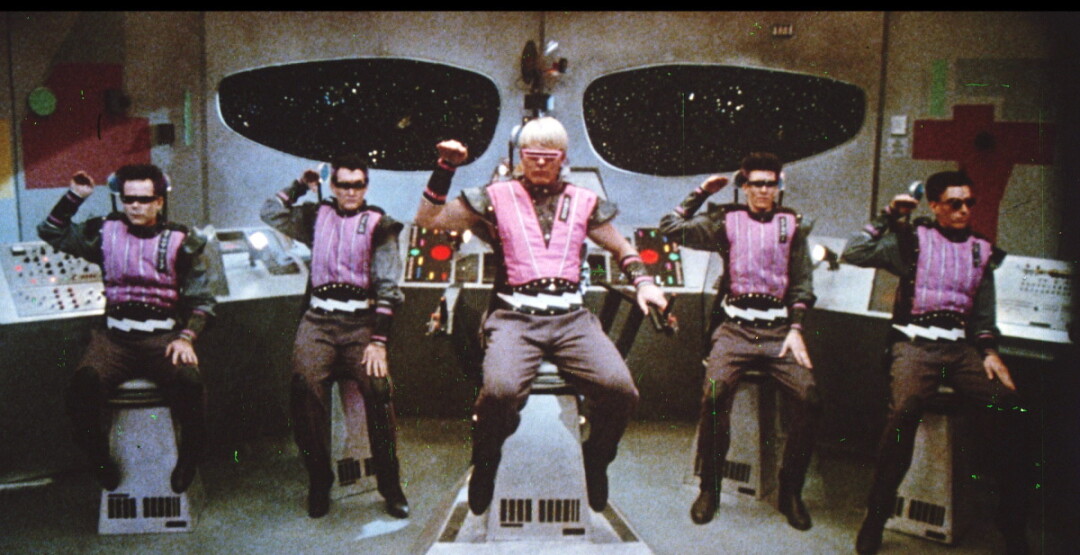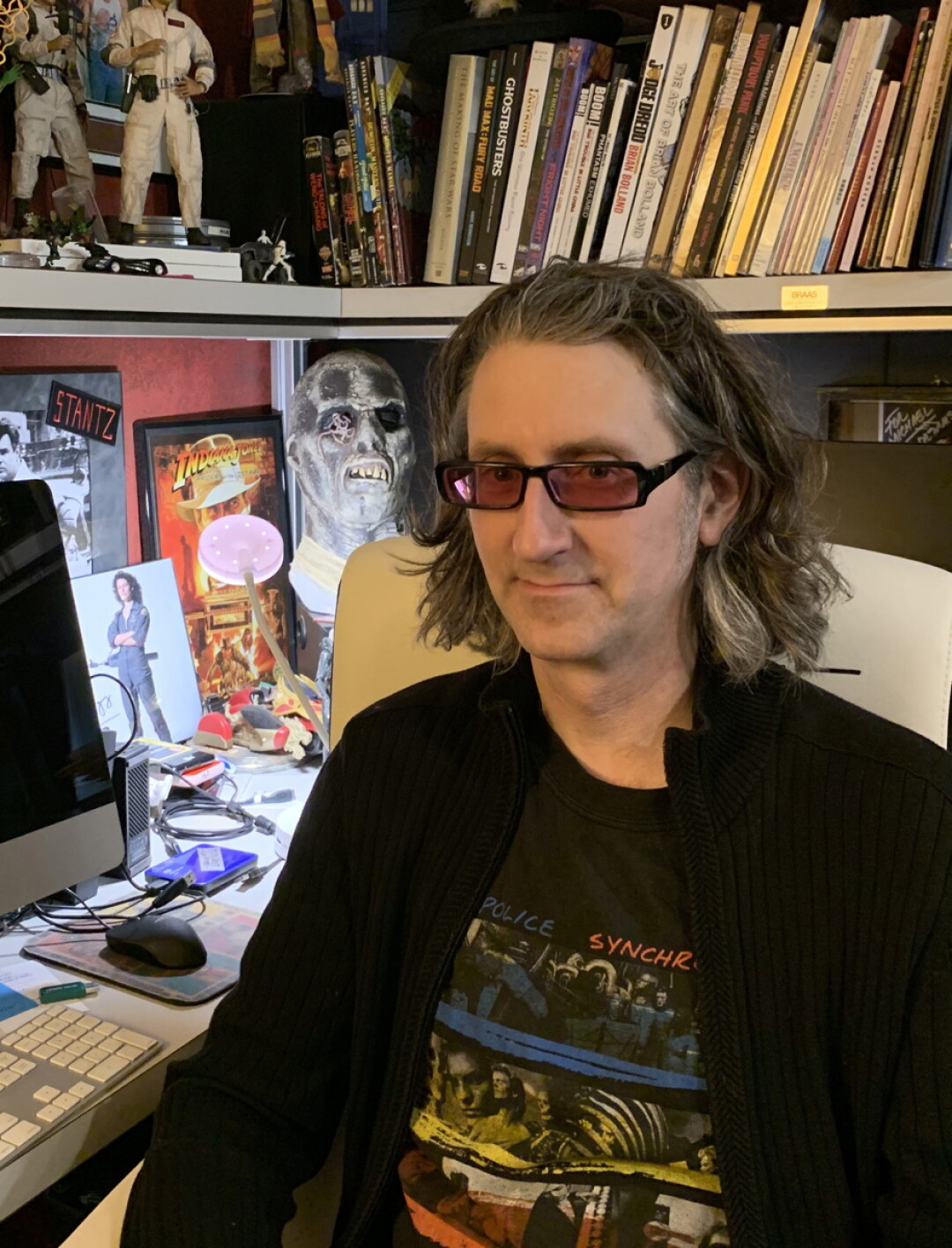Pop Go the Eighties
UW-Stout prof’s book explores intersection of music, movies in a totally rad decade

Michael Heagle, a professor in the Entertainment Design Program at UW-Stout, lives for movies and music. After college, he moved to Los Angeles and found Michael Weldon’s book, Psychotronic Encyclopedia of Film. The text inspired him to create his first feature film – and he has never looked back.
Though the director and studio behind Flashdance doubted the film’s success, the soundtrack was the first to knock Michael Jackson’s Thriller off the top spot of the charts. It was a prime example to the power of a movie soundtrack.
This is where the process of creating Synthesizers and Saxophones: Montage Pop and Musical Movies of the 1980s, an exploration of the relationship between 1980s pop music and movies, began. The book is a collection of essays considering various ’80s films; so many, he had to narrow them down. He set up criteria to follow, which included what he called a “cherry-picking” method. The method limited the number of films he covered, saving him time and energy in the writing process. He focused on movies that were steeped in the musical culture of the ’80s, whether they were made during the decade or after.
“I’d pick out a few movies to work on for the week, watch them with a notebook and jot some ideas down, then take a day to research the music and write the chapter,” Heagle says.

Heagle’s book explains that, like music, dance also brought people together through choreography to classic ’80s pop. Two movies he examines are still talked about and popular today: Dirty Dancing and Flashdance. Heagle notes that original songs from Dirty Dancing, such as “(I’ve Had) The Time of My Life” didn’t initially get much action on charts, but once the movie came out, the songs exploded. And though the director and studio behind Flashdance doubted the film’s success, the soundtrack was the first to knock Michael Jackson’s Thriller off the top spot of the charts. It was a prime example to the power of a movie soundtrack.
Other movies, like Flash Gordon and Labyrinth, are discussed in the book for their association with popular rock acts – Queen and David Bowie respectively. Queen’s music for Flash Gordon was the first cassette Heagle ever got, and he had it memorized. Bowie created almost the entire soundtrack for Labryrinth, which Heagle says is uncommon in today’s films.
“Some recent films have used rock bands as the sole composers,” Heagle says. Daft Punk created the music for Tron Legacy, while electronic composer Junkie XL scored Mad Max: Fury Road. “Interestingly, they’re both continuations of ’80s films.”
Writing Synthesizers and Saxophones took Heagle about a year. He started a little bit of writing about breakdancing movies of the ’80s, which escalated into about 75 reviews and articles.
“One movie would lead to another,” Heagle said. “I’d read an article or a biography and suddenly six new things ended up on the docket.” Eventually, Heagle had to eliminate movies he wished he could have included in the book.
“There’s a lot of musicals that were released in the year 1980 that just aren’t indicative of the ’80s music style – Xanandu, Can’t Stop the Music, Blues Brothers, an insane one called The Apple,” Heagle rattled off. “They’re either disco or popular music that would have been considered oldies even at the time.” Heagle considered including a chapter on “school” movies such as Fast Times at Ridgemont High, which might be used in a subsequent book.
 Heagle’s upcoming project is working on a large script for a series he makes for Amazon Prime Video called Transylvania Television. The show is an adult puppet comedy about monsters running a television station, and has a lot of the same retro elements he was attracted to in Synthesizers and Saxophones.
Heagle’s upcoming project is working on a large script for a series he makes for Amazon Prime Video called Transylvania Television. The show is an adult puppet comedy about monsters running a television station, and has a lot of the same retro elements he was attracted to in Synthesizers and Saxophones.
Synthesizers and Saxophones is available for purchase on Amazon and Blurb.


















